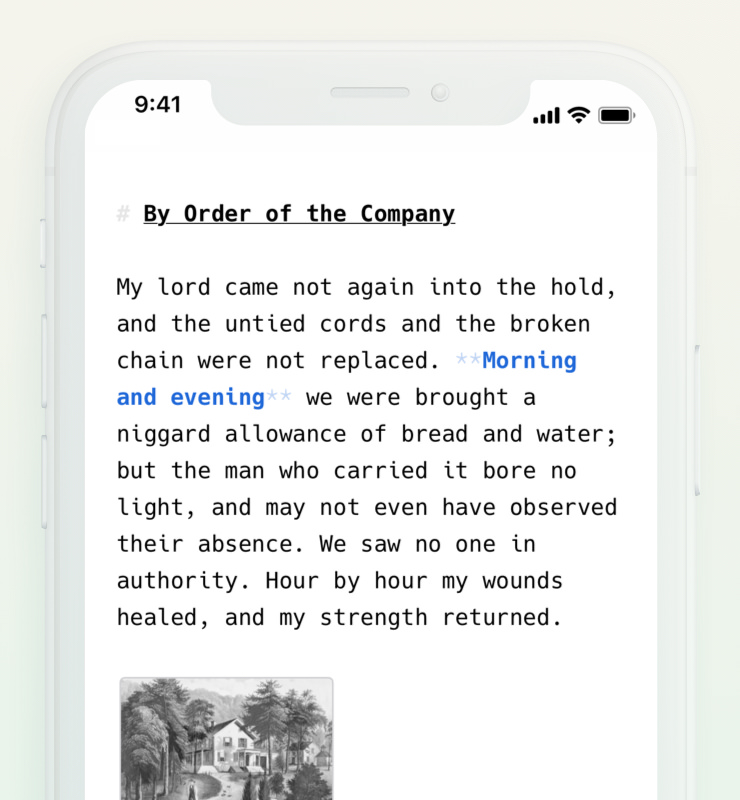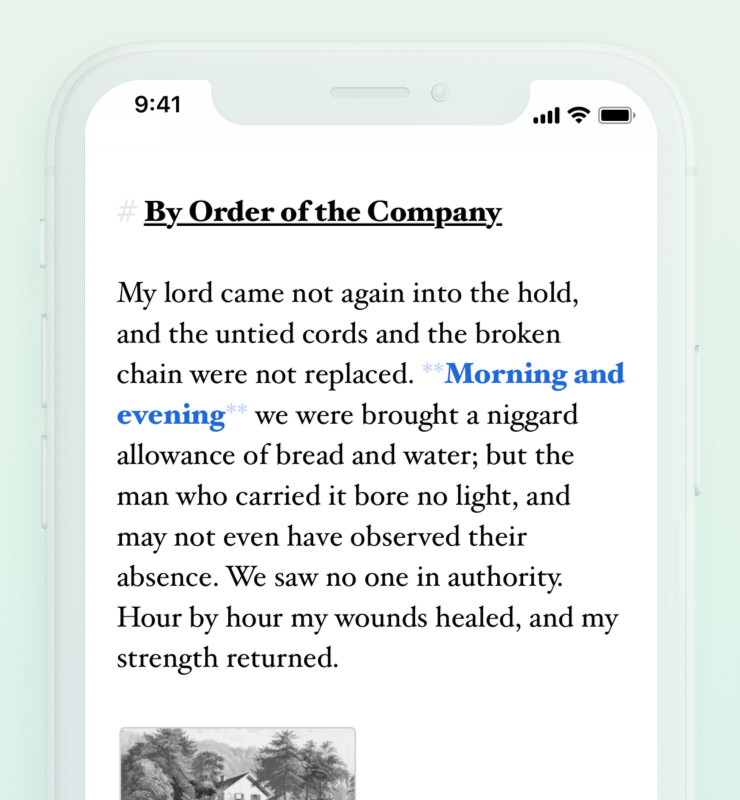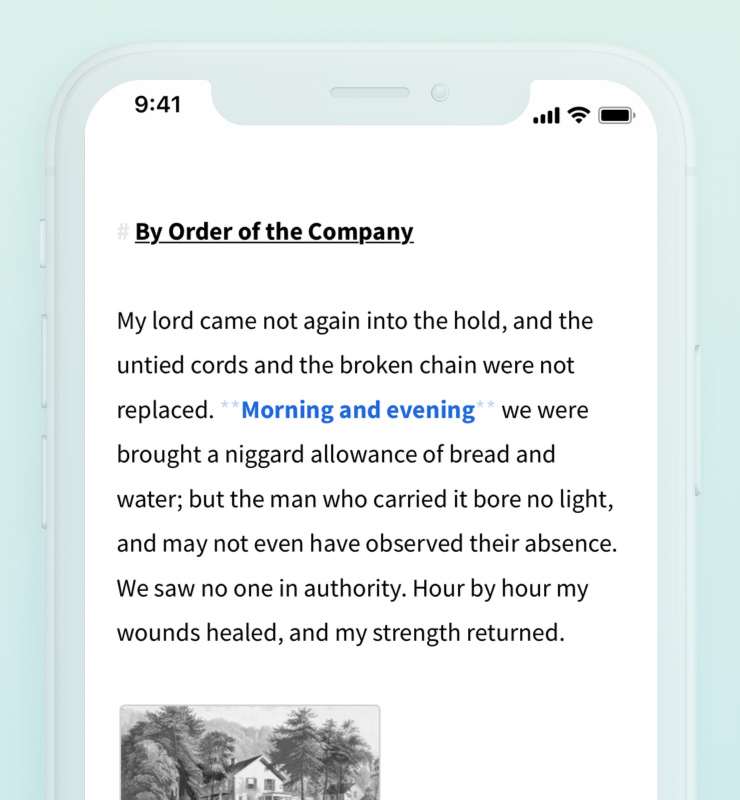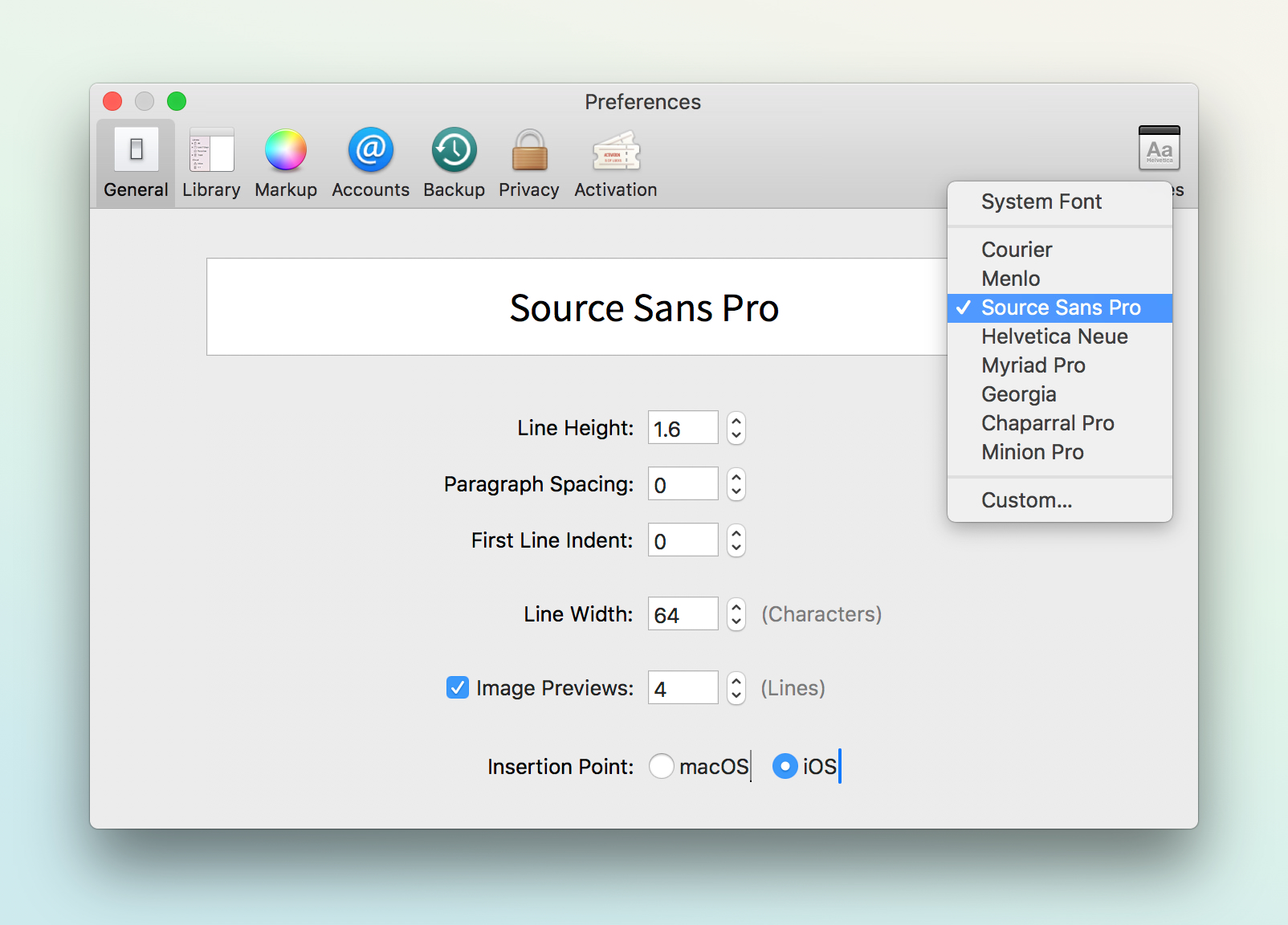It may be worth trying alternatives to your current writing font in Ulysses. Sarah explains why and introduces three of the team’s favorites.
When tasked with selecting a font for writing, most people tend to fall back on traditional choices such as Times New Roman, Courier or Garamond. These fonts are popular, since they come pre-installed on all of today’s computer systems, and they are good fonts, no doubt. So they get used a lot, and they have been around for quite a while. However, there is a broad variety of exciting fonts available today — fonts that can easily compare regarding quality, or that are even better suited for the task.
In fact, there are so many fonts now at our disposal, that it can become hard to choose one. Should you go by taste? What are the pros and cons of serif and sans, of slab and mono? Are some fonts more suitable for onscreen media? Maybe you heard about the “blurriness” of serif fonts on computer monitors, and that you should always choose a font without serifs. After all, designers, usability experts and web developers around the globe have been heavily discussing this topic since the dawn of the digital era.
And while there still exist opposing opinions on most of these questions, one thing is certain: Your options when choosing a font for writing are not as restricted as they used to be a few years ago. Not only is there a vast amount of fonts available, but back then fonts were mainly created for use in printed media, and displays had poorly equipped resolutions. So yes, serif fonts would show up as pixelated blurs. But screen standards have improved so much that this particular problem is almost completely irrelevant now.
So, what should you keep in mind when choosing a writing font today?
What really counts is readability. A font should be appealing to your eye and not a pain to read. Writers also point out that a font should be neutral, to prevent distraction from the writing itself. Some claim the more “anonymous” a font, the easier the editing. Others prefer a monospaced font for a typewriter-like experience to help them get in a “writing mood” and let the typing happen more naturally.
Apple’s system font San Francisco has become a well-received alternative for Ulysses users: It was explicitly designed with screens in mind and is therefore great to read on your devices. It is also used as Ulysses’ default font. The other preselected fonts in Ulysses – namely Courier, Menlo, Helvetica Neue and Georgia – were chosen to offer a selection of solid fonts to begin with. But you can, of course, work with any font that is available on your system.
New Font Inspiration
Do you feel like trying something new? Here are three great fonts to consider as alternatives to the ones mentioned above.

Hack
Hack is designed for the screen. Letters, punctuation, and symbols are well-balanced and can be easily distinguished. The regular weight is comfortable to read, even with small text size. Albeit Hack is designed for source code, I like “regular” writing with it, too — I have just written this blog post with it. It feels like a lighter, compressed version of Courier with better readability and a nice grey level. You can download Hack for free from the developers’ website.

Hoefler Text
Hoefler Text is already available on your Mac, iPad or iPhone. Whereas Ulysses’ default font size felt a bit too big, I really like this font after having changed its size and the line height. Hoefler Text feels settled, so maybe it isn’t the perfect choice for first drafts, but it is very legible, neutral, and also just really nice.

Source Sans Pro
Source Sans Pro is Adobe’s first open source type family. Paul D. Hunt optimized the font to make the reading of longer text passages on screen and in print more comfortable. The font works well on small screens and in user interfaces so it may be perfect for your iPhone. It was inspired by an older font called News Gothic (created in 1908). You can download Source Sans Pro for free at this GitHub page.
Install Your New Font
To make your new favorite font available in Ulysses for Mac, you have to download it and install it on your Mac first of all. Go to the Preferences menu and open the “General” tab. There is a drop-down selection for the font in the white field. Via “Custom…” you can select any font that is installed on your Mac.

To install one of the fonts above on Ulysses for iOS, follow the download link and tap the file. You can directly open it in Ulysses. Alternatively, you can send the font file (OTF or TTF format) from your Mac to your iPhone or iPad, for example via E-Mail or AirDrop. When you tap the file, you will be able to open it with Ulysses. The font will be activated automatically, and you will be ready to go.
Finding your favorite writing font is a very personal decision, as it also has to meet your aesthetics and taste. Feel free to play a bit with your options. A new font can bring a fresh breath of air to your writing, and maybe that’s just what you need to increase your creative output.
